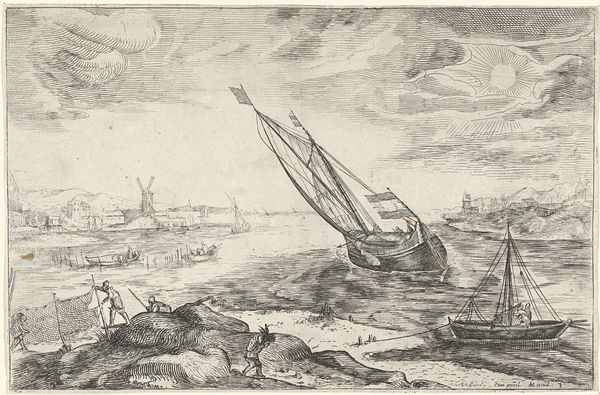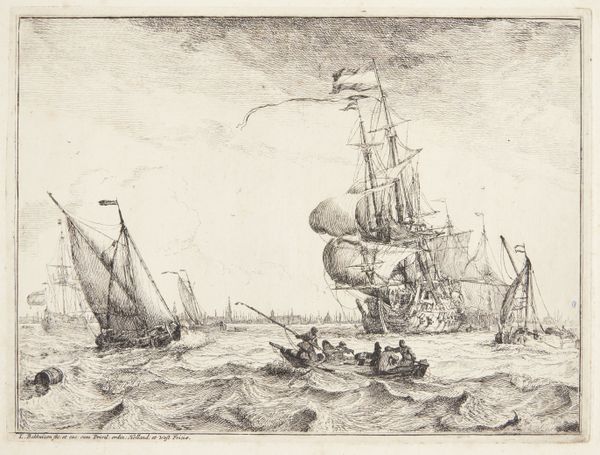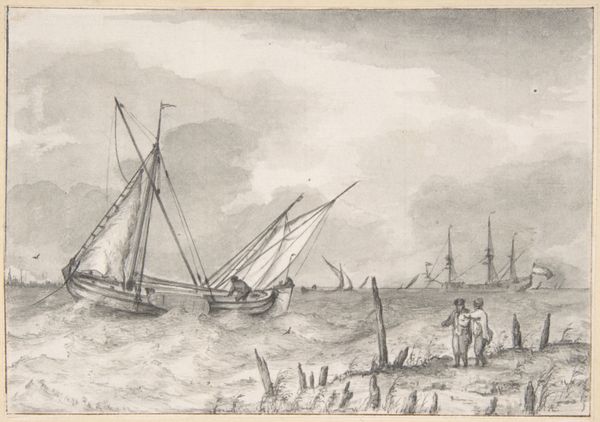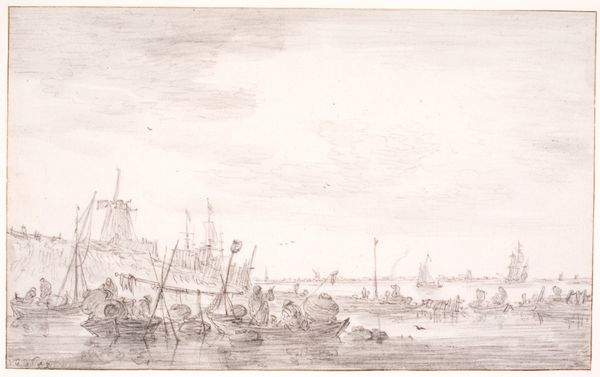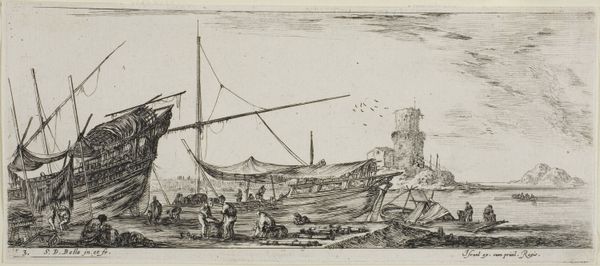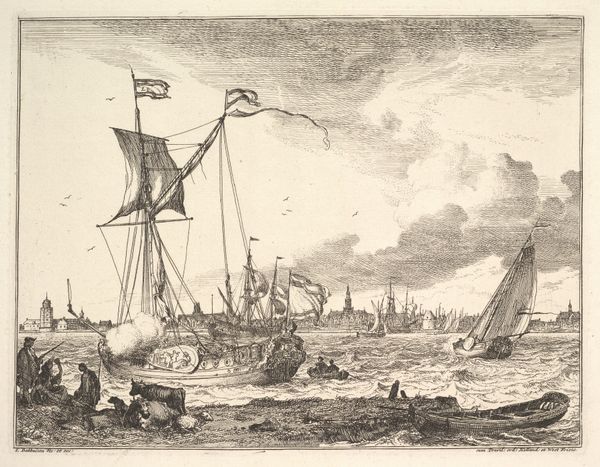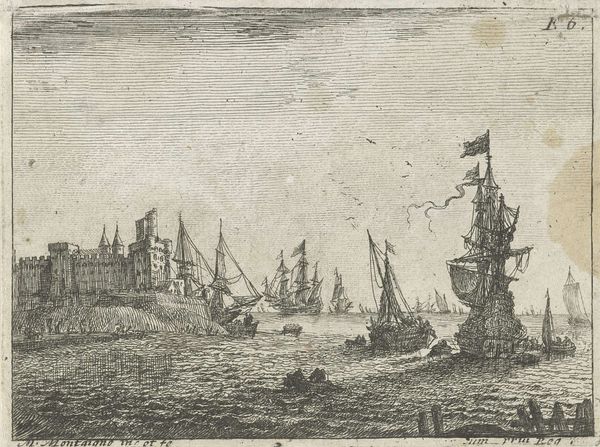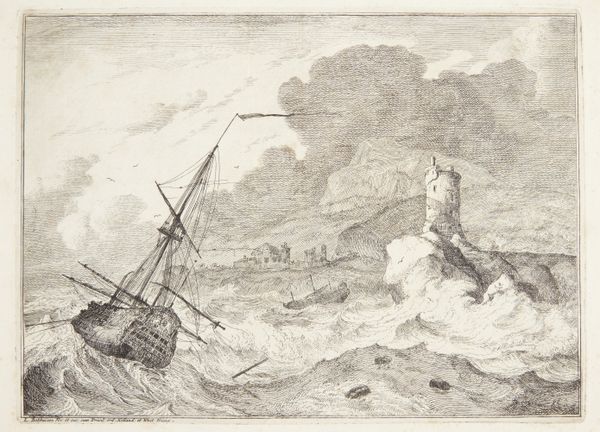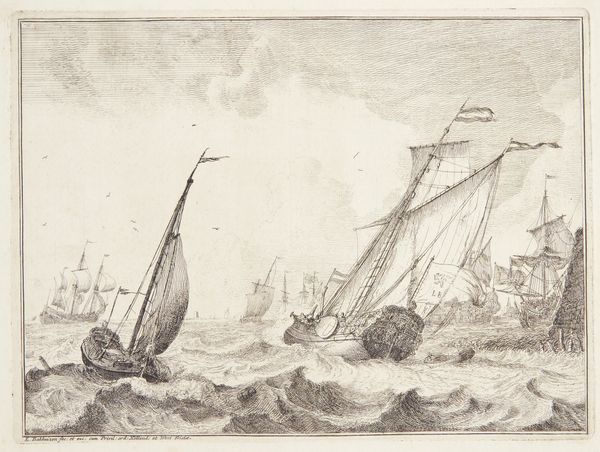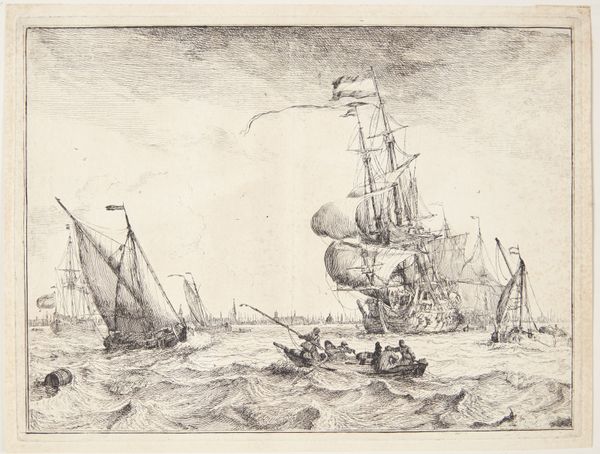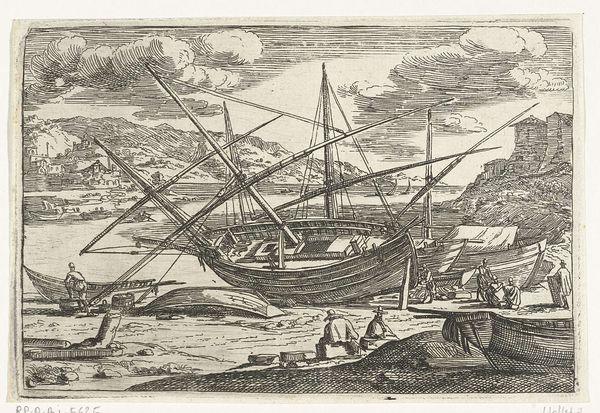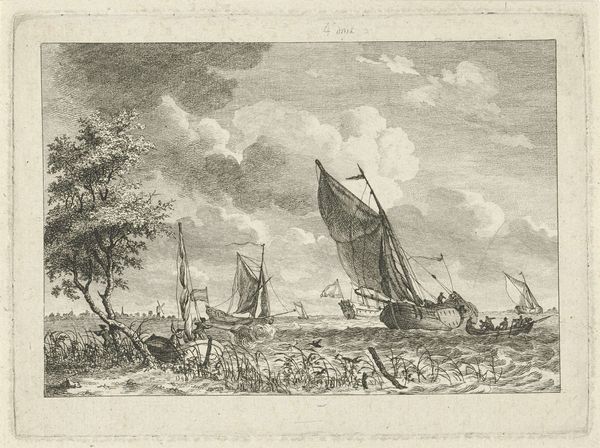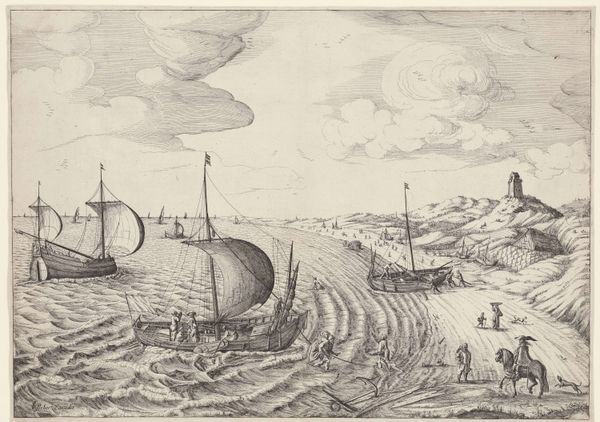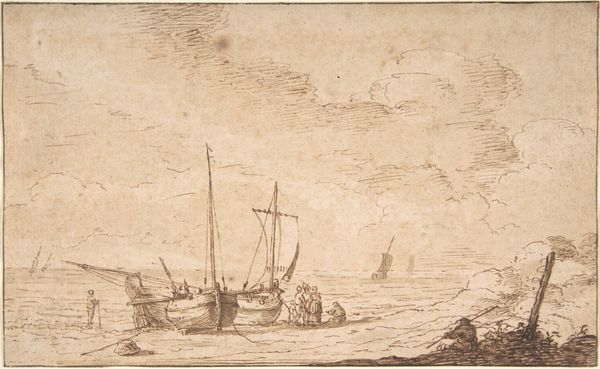
print, etching
#
dutch-golden-age
# print
#
etching
#
landscape
#
line
#
realism
Dimensions: 220 mm (height) x 325 mm (width) (plademaal)
Editor: Gerrit Adriaensz Gauw created "Flood Landscape with Fishing Boats" sometime between 1601 and 1604, using etching techniques to render a seemingly mundane scene. There's almost an immediacy to the image, like we're capturing a simple, routine moment. How would you interpret this work? Curator: The apparent simplicity you noticed belies a complex interplay between the visual rhetoric of landscape and the socioeconomic realities of the Dutch Golden Age. The etching aesthetic with stark lines adds a documentary feel. How might this reflect a shift in art's patronage and purpose at the time? Editor: Are you suggesting the work highlights something specific about 17th-century Dutch society? Curator: Exactly. These scenes served as both aesthetic objects and carriers of socio-political meaning. The etching process itself enabled wider distribution, fitting within the rise of a merchant class keen on investing in images reflecting their values. Look at the fishing boats. What could they signify? Editor: Work, definitely. A society dependent on waterways for both trade and sustenance? Curator: Precisely! It's important to consider who this imagery was for and how it participated in constructing and reflecting Dutch identity during a period of significant economic expansion. Consider also the details like the placement of windmills and the quality of light; what stories do they tell about control, land, and the relationship between people and their environment? Editor: It feels like more than just pretty scenery – the etching feels purposeful, embedding a social message in everyday life. I now see how deeply cultural values could permeate even seemingly simple art forms. Curator: Indeed. These images normalized a specific worldview. By viewing art as part of broader historical currents, we reveal the mechanics behind image-making and how imagery shaped and was shaped by its context. Editor: I learned that even images portraying everyday life, like fishing boats, carried important political and cultural meanings, reflecting the values of the dominant class. Curator: Precisely. The ‘simplicity’ itself becomes part of the political argument.
Comments
No comments
Be the first to comment and join the conversation on the ultimate creative platform.
